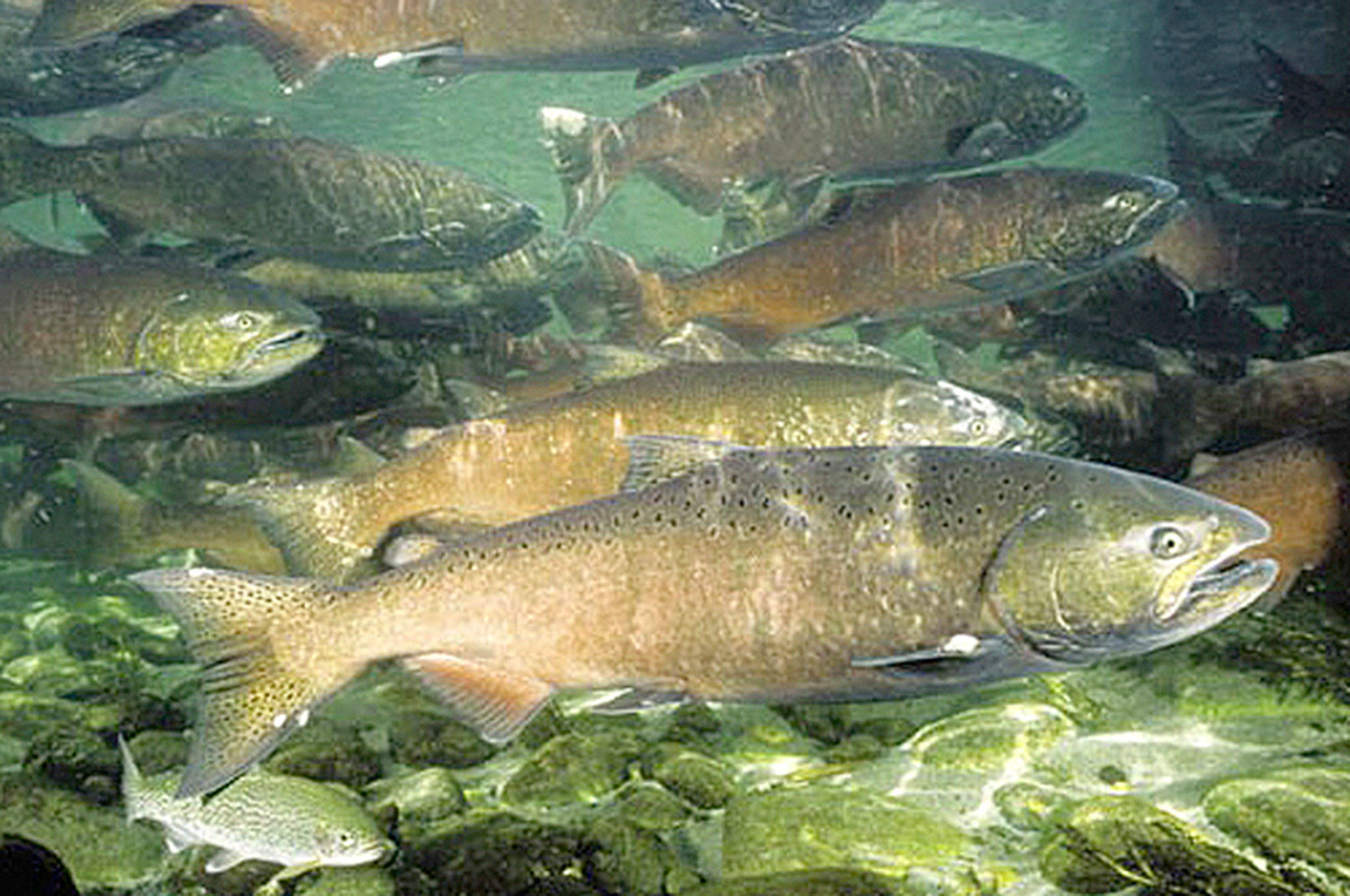By Pierre LaBossiere
Peninsula Daily News
OLYMPIA — Low returns of wild salmon to several rivers are being projected by the Washington Department of Fish and Wildlife this year.
That was the prediction of fishery managers at a public meeting held Feb. 28, when forecasts for chinook, coho, sockeye, chum and pink salmon were released. The forecasts were developed by the WDFW and treaty tribes.
The forecast meeting in Olympia marks the starting point for developing 2017 salmon-fishing seasons in Puget Sound, Columbia River and Washington’s Pacific Coast areas. Fishery managers have scheduled a series of public meetings through early April before they plan to finalize seasons later that month.
Some chinook fisheries in Puget Sound will be limited this year due to low returns of wild chinook to rivers. Rivers expected to be affected are the Stillaguamish and Nooksack. The forecast for wild chinook is down 10 percent from last year while the forecast for Puget Sound hatchery chinook is 166,000 fish, up 27 percent from the 2016 forecast.
Unfavorable environmental conditions, such as warm ocean water or flooding in rivers, have reduced the number of salmon returning to Washington’s waters, especially when compared to some of the more abundant returns of recent years, said Kyle Adicks, salmon fisheries policy lead for WDFW.
“Some salmon runs are expected to return in higher numbers over last year, when we forecast historic low numbers for several stocks,” Adicks said. “But, for the most part, forecasts are at about average or lower than average, which means we will once again need to limit fisheries in some areas to protect weak returns of wild fish.”
Coho returns to several Puget Sound-area rivers, such as the Skagit and Stillaguamish, are projected to be extremely low, which will limit opportunities for salmon fishing. The total forecast of 559,000 Puget Sound coho is down about 6 percent from the 10-year average, though it represents an increase from last year’s forecast.
Sequim meeting scheduled
Adicks encourages anglers, commercial anglers and others interested in Washington state salmon fisheries to attend one of nearly 20 public meetings scheduled on setting salmon seasons.
One of those meetings, a discussion of Puget Sound recreational fisheries, will be held Thursday, March 16 from 7 p.m. to 9 p.m. at Trinity Methodist Church at 100 S. Blake Ave., in Sequim. Preseason forecasts and potential salmon fisheries will be on the agenda.
State, tribal and federal fishery managers will meet from Wednesday to Monday in Vancouver with the Pacific Fishery Management Council (PFMC) to develop options for this year’s commercial and recreational ocean chinook and coho salmon fisheries. The PFMC establishes fishing seasons in ocean waters three to 200 miles off the Pacific Coast.
Columbia River forecast
Farther south, about 386,000 Columbia River coho are projected to return this year, which is similar to last year’s forecast.
Only 223,000 coho returned last year to the Columbia River, where some coho stocks are listed for protection under the federal Endangered Species Act.
About 582,600 fall chinook salmon are expected to return to the Columbia River, which is similar to last year’s return. While that’s significantly lower than the record 1.3 million fish that returned in 2015, this year’s forecast is considered a fairly good run of fall chinook, Adicks said.
Roughly 260,000 “upriver brights” are headed for areas of the Columbia River above Bonneville Dam. The forecast for these fall chinook is the lowest since 2009.
About 250,000 hatchery chinook are expected to return this year to the lower Columbia River – nearly 124,000 more fish than returned last year. Those salmon, known as “tules,” are the backbone of the recreational ocean chinook fishery. For the most part, tules are doing well considering recent unfavorable ocean conditions, Adicks said.
Meanwhile, this year’s run of pink salmon, which mostly return to Washington’s waters only in odd-numbered years, is expected to be about 80 percent lower than the 10-year average. About 1.15 million pink salmon are forecast to return to Puget Sound this year.
On a more positive note, roughly 47,000 sockeye are expected to return to the Baker River, a tributary of the Skagit, making sockeye fisheries in Baker Lake and the Skagit River a possibility, Adicks said.
“This is going to be another challenging year for setting salmon fishing seasons,” Adicks said. “We’ll rely heavily on input from the public to set priorities for fisheries.”
More meetings
Additional public meetings have been scheduled into April to discuss regional fishery issues. Input from these regional discussions will be considered as the season-setting process moves into the “North of Falcon” and PFMC meetings, which will determine the final 2017 salmon seasons.
The PFMC is expected to adopt final ocean fishing seasons and harvest levels at its April 7-11 meeting in Sacramento, Calif. The 2017 salmon fisheries package for Washington’s inside waters is expected to be completed by the state and tribal co-managers during the PFMC’s April meeting.

